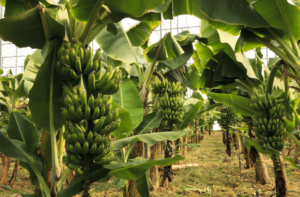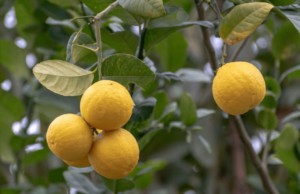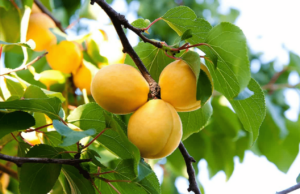Choosing the Best Soil for Healthy Plants
Soil is a complex mixture of minerals, organic matter, water, and air. The mineral component of soil is made up of various particles such as sand, silt, and clay. These particles differ in size and shape, which affects the soil’s ability to retain water and nutrients. Organic matter in soil includes decomposed plant and animal material, which provides essential nutrients for plant growth. Water and air are also crucial components of soil, as they provide the necessary environment for microbial activity and root respiration. Understanding the composition of soil is essential for successful gardening, as it directly impacts the health and growth of plants.
Soil composition can vary greatly depending on factors such as climate, topography, and human activity. For example, soils in arid regions may have a higher sand content, while soils in wetter regions may have more clay. Human activity, such as agriculture and construction, can also alter soil composition. It is important to understand the specific composition of the soil in your garden or landscape in order to provide the best conditions for plant growth.
Key Takeaways
- Soil composition includes mineral particles, organic matter, water, and air.
- Different types of soil include sandy, clay, silt, and loam, each with unique characteristics.
- Assess your plant’s needs by considering its water and nutrient requirements, as well as its preferred soil pH.
- Factors to consider when choosing soil include drainage, texture, and nutrient content.
- Organic soil options are derived from natural materials, while inorganic options are synthetic and may contain added nutrients.
- Soil amendments like compost, peat moss, and perlite can improve soil structure and fertility.
- Maintain healthy soil by regularly testing and adjusting pH, adding organic matter, and avoiding compaction.
Types of Soil and Their Characteristics
There are several different types of soil, each with its own unique characteristics. Sandy soil is composed of larger particles and has a gritty texture. It drains quickly and is easy to work with, but it does not retain water or nutrients well. Clay soil, on the other hand, is composed of very fine particles and has a sticky texture when wet. It retains water and nutrients well, but it can become compacted and difficult to work with. Silt soil is a combination of sand and clay particles and has properties of both types of soil.
Loam soil is considered the ideal type of soil for gardening, as it is a balanced mixture of sand, silt, and clay. It has good drainage, retains moisture and nutrients, and is easy to work with. Peat soil is high in organic matter and retains moisture well, making it suitable for acid-loving plants such as azaleas and blueberries. Chalky soil has a high pH and drains quickly, making it suitable for drought-tolerant plants. Understanding the characteristics of different types of soil is important for choosing the right soil for your plants.
Assessing Your Plant’s Needs
Before choosing soil for your plants, it is important to assess their specific needs. Different plants have different requirements when it comes to soil type, pH level, and nutrient content. For example, acid-loving plants such as rhododendrons and blueberries thrive in acidic soil with a pH level between 4.5 and 6.0. On the other hand, alkaline-loving plants such as lilacs and clematis prefer soil with a higher pH level between 7.0 and 8.5.
In addition to pH level, it is important to consider the nutrient content of the soil. Some plants may require specific nutrients such as nitrogen, phosphorus, or potassium in higher or lower quantities. Understanding the specific needs of your plants will help you choose the right soil to promote healthy growth and blooming.
Factors to Consider When Choosing Soil
| Factor | Description |
|---|---|
| Soil Type | Determine whether the soil is clay, sandy, loamy, or silty. |
| Drainage | Check if the soil has good drainage to prevent waterlogging. |
| pH Level | Consider the acidity or alkalinity of the soil for specific plants. |
| Organic Matter | Assess the amount of organic material in the soil for fertility. |
| Compaction | Examine if the soil is compacted, affecting root growth and water infiltration. |
When choosing soil for your garden or landscape, there are several factors to consider. The first factor to consider is the type of plants you will be growing. Different plants have different soil requirements, so it is important to choose soil that will provide the necessary conditions for their growth. Another factor to consider is the drainage of the soil. Some plants prefer well-draining soil, while others thrive in moist or even waterlogged conditions.
The texture of the soil is also an important factor to consider. Sandy soil drains quickly but does not retain water well, while clay soil retains water but can become compacted. Loam soil is considered the ideal texture for gardening, as it provides good drainage and retains moisture and nutrients. The pH level of the soil is another important factor to consider when choosing soil. Some plants prefer acidic soil, while others thrive in alkaline conditions.
Organic vs. Inorganic Soil Options
When it comes to choosing soil for your garden or landscape, you have the option of using organic or inorganic soil. Organic soil is made from natural materials such as compost, peat moss, and manure. It is rich in nutrients and beneficial microorganisms that promote healthy plant growth. Inorganic soil, on the other hand, is made from synthetic materials such as perlite, vermiculite, and synthetic fertilizers. It may not contain the same level of nutrients or microbial activity as organic soil.
Organic soil is often preferred by gardeners who want to promote sustainable and environmentally friendly gardening practices. It improves soil structure and fertility over time and reduces the need for synthetic fertilizers and pesticides. Inorganic soil may be preferred by gardeners who want more control over the nutrient content of the soil or who are growing plants that have specific nutrient requirements.
Soil Amendments for Improved Plant Health

Soil amendments are materials that are added to soil to improve its structure, fertility, or pH level. Common soil amendments include compost, manure, peat moss, perlite, and vermiculite. Compost is a valuable soil amendment that adds organic matter and beneficial microorganisms to the soil. It improves soil structure, increases water retention, and provides essential nutrients for plant growth.
Manure is another valuable soil amendment that adds organic matter and nutrients to the soil. It improves soil fertility and promotes healthy plant growth. Peat moss is a natural soil amendment that improves water retention and aeration in the soil. It is particularly useful for improving the structure of sandy or clay soils.
Perlite and vermiculite are lightweight minerals that improve drainage and aeration in the soil. They are particularly useful for improving the structure of heavy clay soils. Soil amendments can be used to address specific issues with your soil, such as poor drainage or low fertility. They can also be used to create the ideal growing conditions for specific plants.
Tips for Maintaining Healthy Soil
Maintaining healthy soil is essential for successful gardening. One way to maintain healthy soil is by practicing crop rotation. Planting different types of crops in the same area each year can deplete the soil of specific nutrients and increase the risk of pests and diseases. Crop rotation helps maintain soil fertility and reduces the risk of pest infestations.
Another way to maintain healthy soil is by adding organic matter regularly. Organic matter improves soil structure, increases water retention, and provides essential nutrients for plant growth. Adding compost, manure, or other organic materials to the soil each year can help maintain its fertility and health.
Avoiding over-tilling or compacting the soil is also important for maintaining healthy soil. Over-tilling can disrupt the natural structure of the soil and reduce its ability to retain water and nutrients. Compacting the soil can reduce aeration and root growth. Using mulch around plants can help maintain moisture levels in the soil and reduce weed growth.
Regularly testing the pH level and nutrient content of the soil can help you identify any issues that need to be addressed. Adding lime or sulfur can adjust the pH level of the soil to create optimal growing conditions for your plants. Adding organic or synthetic fertilizers can address specific nutrient deficiencies in the soil.
In conclusion, understanding the composition of soil and its impact on plant growth is essential for successful gardening. There are different types of soils with unique characteristics that should be considered when choosing the right one for your plants’ needs. Factors such as drainage, texture, pH level, and nutrient content should be taken into account when selecting soil for your garden or landscape. You also have the option of choosing between organic or inorganic soils based on your gardening preferences.
Soil amendments such as compost, manure, peat moss, perlite, and vermiculite can be used to improve the structure, fertility, or pH level of your soil. Maintaining healthy soil through practices such as crop rotation, adding organic matter regularly, avoiding over-tilling or compacting the soil, using mulch, and testing pH levels and nutrient content are essential for promoting healthy plant growth in your garden or landscape. By understanding these principles and implementing these tips, you can ensure that your plants thrive in optimal growing conditions.
Soil amendments such as compost, manure, peat moss, perlite, and vermiculite can be used to improve the structure, fertility, or pH level of your soil. Maintaining healthy soil through practices such as crop rotation, adding organic matter regularly, avoiding over-tilling or compacting the soil, using mulch, and testing pH levels and nutrient content are essential for promoting healthy plant growth in your garden or landscape. By understanding these principles and implementing these tips, you can ensure that your plants thrive in optimal growing conditions. This will result in stronger, more resilient plants that are better able to resist pests and diseases, as well as produce higher yields of fruits, vegetables, or flowers.
FAQs
What is the best soil for plants?
The best soil for plants is one that is well-draining, nutrient-rich, and has a good balance of sand, silt, and clay.
What are the characteristics of good soil for plants?
Good soil for plants should have a pH level between 6 and 7, be well-aerated, and have a good structure that allows for root growth and water retention.
What are some examples of good soil for plants?
Examples of good soil for plants include loamy soil, which is a balanced mixture of sand, silt, and clay, and soil that has been amended with organic matter such as compost or peat moss.
How can I improve the soil for my plants?
You can improve the soil for your plants by adding organic matter such as compost, mulch, or peat moss, and by regularly aerating and loosening the soil to improve drainage and root growth.
Can I use potting soil for outdoor plants?
Potting soil can be used for outdoor plants, but it is important to choose a potting mix that is appropriate for the specific needs of the plants and the outdoor environment.



